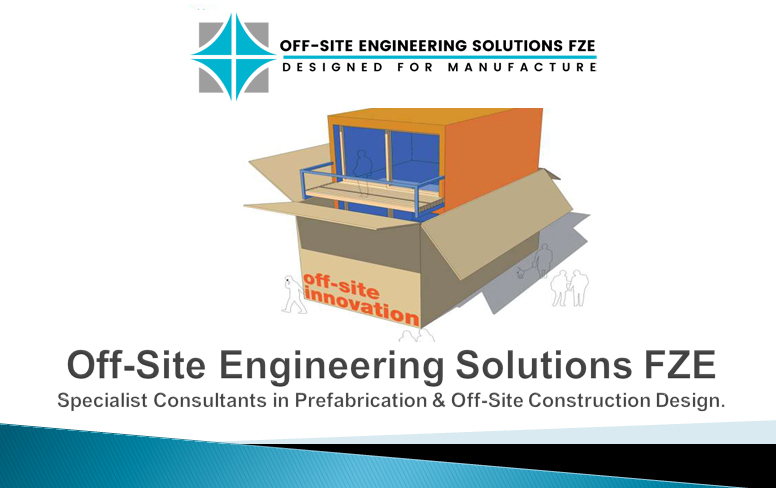Off-Site Engineering Solutions are specialists in the production of 3D drawings and fully
compliant BIM models for the entire range of prefabricated and off-site manufactured building
sub-assemblies. Our normal focus is on the scope areas of the project that are suitable for off-
site construction. We transform the Client’s traditional 2D drawings, into a detailed modular 3D
design and the model we produce for the prefabricated scope area is then fully integrated into
the Client’s overall BIM model.
Module manufacturing sheets and workshop production drawings are extracted from the 3D BIM model produced for the modular scope area. These drawings are used to facilitate the efficient manufacture of modules by our client’s in-house workshop team or by third party modular manufacturers.
Our team is most effective when engaged early in the project so as to incorporate design for
manufacture and assembly (DfMA) into the original design. Off-Site Engineering Solutions BIM
Department works in line with PAS1192 – the framework on which BIM is built – to ensure we
meet a client’s requirements and identify all potential pitfalls. Resolutions are anticipated and
implemented prior to construction commencing, whilst providing clients with coordinated 3D
designs, visualizations and spatial layouts.
BIM facilitates the construction industry supply chain in the use of offsite prefabrication. Although initial costs between modular and traditional construction indicate a 5-7% advantage in favour of off-site, it is the whole-life cost and efficiencies that weigh in favour of offsite – the speed of build and reduced time onsite deliver tangible benefits for modular over traditional build. In this region, the reduction in foreign labour of 40-60% is another compelling reason for prefabrication. Whatever type of prefabrication system, Bathroom PODS, Room Modules, MEP Prefabrication or 3D Printed Buildings….. it all starts with BIM.
Offsite manufacturing and BIM both serve as valuable solutions in terms of improving performance of the construction industry. Anecdotal evidence demonstrates that offsite construction brings faster delivery, better quality and safer working sites, and a 2016 report from KPMG strengthens this evidence, as it found offsite construction to be six months quicker than traditional construction, with financial net savings, on one such project, of £36 million.
4D/5D BIM modelling – the alignment of individual 3D models with time and cost related information– is already helping support pre-construction planning and building.
It’s playing an integral role in many projects, helping to bring together both design and construction teams before any onsite works commence.
By using 4D planning tools, not only will it surpass 3D BIM models, it will allow these models to be controlled and manipulated, showing the building as it will appear during the construction phase and throughout its design life.
Buildings and infrastructure projects are generally bespoke and designed for the needs of end-users and local communities. The individual nature of projects has historically prevented harnessing the benefits of standardisation, mass production and offsite manufacture. DfMA changes this mind-set at the design stage. Through standardised solutions, including technologies and processes already used successfully in other industries, it is possible to deliver many benefits:
- Faster onsite installation and more controlled onsite processes
- Improved programme certainty and reduced commercial risk
- Improved design lead time
- Reduced workforce onsite, reducing risk and improving safety
- Reduced quality defects and associated waste
- Reduced quality defects and associated waste
- Reduced operational and embodied carbon
- Economies of scale through optimised transport solutions and standardised products

 Off-Site MEP Prefab Solutions
Off-Site MEP Prefab Solutions Off-Site Pod Solutions
Off-Site Pod Solutions Off-Site Modular Solutions
Off-Site Modular Solutions Off-Site BIM Solutions
Off-Site BIM Solutions Off-Site Manufacturing Solutions
Off-Site Manufacturing Solutions Off-Site 3D Printing Solutions
Off-Site 3D Printing Solutions


